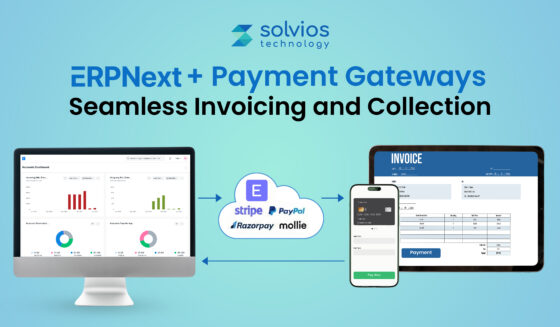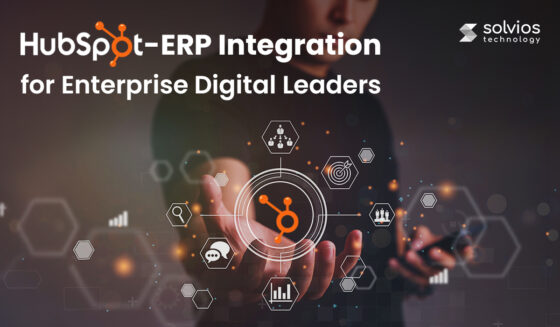
Introduction
The manufacturing industry is complex, comprising various moving parts such as production, inventory, and stock levels that keep it together.
Managing every aspect of manufacturing operations manually can be a challenge, especially if you’re a growing company. Not to forget, a delay in one aspect could result in a massive backlog.
But does it mean that manufacturers should continue facing challenges in production?
Definitely not!
Enter ERPNext, the next generation of ERP software designed for modern manufacturing. It helps manufacturers streamline different aspects of their operations without any hassle.
Therefore, this blog takes a closer look at ERPNext for the manufacturing industry use case. Continue reading as we learn more about it in the following sections.
What is ERPNext?
ERPNext is an innovative open-source cloud ERP software designed for manufacturing businesses of all sizes.
Built on the Frappe framework, ERPNext stands out as the best ERP for the manufacturing industry operations. This ERP software serves as a central modular hub, connecting diverse industrial processes to promote seamless cooperation and efficiency throughout the firm.
Designed for the manufacturing industry, this ERP software features ERPNext modules that streamline business processes, including purchasing, inventory management, sales, accounting, human resources, project management, production, CRM, and payroll to help simplify operations.
What’s more? ERPNext’s innovative features, user-friendly design, and easy and quick deployment are some of its main selling points, making it the ideal ERP for the manufacturing industry.
Why ERPNext is The Best Software for Manufacturing Industry
1. Lightweight Yet Powerful:
ERPNext is a lightweight ERP software, suitable for several sectors, including electronics, food processing, textiles, and chemical manufacturing industry. ERPNext offers functionalities like reporting, user interfaces, and workflows that add to everyday operations.
2. Affordable and Easy to Deploy:
ERPNext is one of the few open-source systems that can provide enterprise-level features. This makes it extremely affordable, with no need for costly permits or hidden costs.
3. Customizable Workflows and Modules:
ERPNext software is designed with flexibility in mind. Manufacturing businesses of every type and size can integrate it into their operations and customize the software per their unique requirements, without worrying about whether their system can keep up.
4. Ideal for Discrete, Process, and Engineer-to-Order (ETO) Manufacturing:
ERPNext software adapts to diverse manufacturing styles, whether discrete, process, or engineer-to-order (ETO). It streamlines different aspects of operations to improve operations over time.
Features of ERPNext for Manufacturing Industry
As global manufacturing businesses evolve, ERPNext emerges as an all-inclusive open-source solution. It helps businesses increase effective production and revenue with the following core features:
Bill of Materials (BoM) Management
ERPNext simplifies creating, editing, and managing detailed Bills of Materials for individual products. It also allows users to add additional attributes to ensure the production teams remain accurate and updated.
Production Planning & Work Orders
With the ERPNext system as their ERP, manufacturers can plan their processes with transparency. It tracks work orders, allocates resources, and monitors progress, so manufacturers can meet deadlines without overloading production.
Inventory & Warehouse Management
Stay on top of your inventory levels with the ERPNext system. The ERPNext software allows manufacturers to track different aspects of their inventory across multiple warehouses. With ERPNext, manufacturers can track raw materials, work-in-progress, and finished goods in real time.
Quality Control
ERPNext software allows manufacturers to set quality control in production. It enables manufacturers to establish checkpoints, flag non-conformance, and record inspection results, helping with consistency in operations throughout.
Real-Time Reporting & Dashboards
Data is the lifeblood of manufacturing operations, and the ERPNext system helps you move the clock with precision. It allows manufacturers to check production status, inventory levels, and key performance metrics in real-time for better decision-making.
Supply Chain & Procurement Integration
ERPNext software moves your operations beyond basic manufacturing. It helps business owners automate material requests, purchase orders, and supplier communication, reducing delays and ensuring seamless production throughout.
Shop Floor Control
Integrating ERPNext software into your systems enables better shop floor control. It helps track everyday activities, from assigning tasks to tracking machine usage with complete visibility into operations at the ground level.
Cost Tracking & Analytics
Monitor manufacturing costs in detail, from raw materials to labor and overheads. ERPNext provides cost analysis tools to identify inefficiencies and improve profitability over time.
Top Benefits of ERPNext for Manufacturers
Streamlined Operations & Efficiency
Delays in manufacturing are an indicator of disconnected systems. With ERPNext integrated into your operations, it works as the connecting bridge between production scheduling, sales orders, and material planning.
Reduced Inventory & Waste
Holding inventory not only blocks your working capital but also increases the risk of product expiry. With ERPNext, business owners or managers have access to real-time visibility into quantities, usage rates, and reorder points. It helps manufacturers eliminate the hassle of over stocking by streamlined production.
Improved Quality & Compliance
Consistent quality requires both clear processes and reliable tracking. With ERPNext, businesses have well-defined quality checks at every stage, so potential defects are caught before they progress.
All results are logged automatically, which not only simplifies compliance audits but also provides a historical record for continuous improvement initiatives.
Better Planning & On-Time Delivery
Meeting delivery commitments starts with knowing capacity, material availability, and demand forecasts over a single dashboard.
ERPNext connects these elements, allowing planners to create schedules that are both realistic and achievable. As a result, lead times become more predictable, and customers receive products when promised.
Cost Visibility & Control
ERPNext keeps complete account of costs during manufacturing, from raw materials entering the shop floor to labor hours and equipment usage.
This level of tracking gives management the ability to spot overspending early. Corrective measures can then be implemented before minor variances turn into major budget overruns.
Data-Driven Decision Making
Manufacturers rely on incomplete information when their operational data is scattered. With ERPNext, they have access to consolidated metrics such as production efficiency, delivery performance, and inventory turnover in a single reporting view.
Access to such data makes it easier to spot trends, enabling managers to respond with targeted improvements backed by factual, timely insight.
Want to improve your manufacturing process?
Reach out today!ERPNext Vs. Traditional ERP Systems
ERPNext is designed to set your business apart. Thanks to its open-source nature, it changes how businesses manage their operations.
Let’s learn more about the role of ERPNext against traditional ERP systems.
| Basis of Difference | ERPNext | Other Traditional Systems |
| Source Nature | ERPNext is open-source, allowing users to install the software without the need for annual licensing or relying on a single vendor. | Traditional ERPs require proper licensing before you can use them. Users need to pay subscription for use. |
| Customization | Users can create different levels of customization for their workflow without compromising stability. | Traditional ERP systems often limit customization and require heavy investment for any changes. |
| Features | Includes a full suite of modules for different manufacturing operations. | These modules are sold separately or require additional licensing. |
| Cost & Customization | With ERPNext, the cost is limited to implementation, hosting, and any chosen support services. | Traditional systems have a number of expenses that add to the development charges. |
| Open-source Nature | For SMEs and in-house IT teams, ERPNext’s open-source foundation is a key advantage. | Traditional ERPs aren’t open source; they require additional licensing to unlock different aspects of operations. |
How Solvios Helps Manufacturers Implement ERPNext
At Solvios Technology, we help you integrate ERPNext into your manufacturing operations in four simple steps. We can help transform your manufacturing operations via:
- Consulting and needs analysis: Our experts conduct a detailed review of your operations to identify the hurdles in manufacturing. Based on our analysis, we provide tailored recommendations, including a clear breakdown of the ERPNext implementation cost, to help streamline your workflow..
- Custom development & module integration: Following our audit, we recommend implementing customized solutions tailored to your manufacturing operations. We create systems that simplify your operations and improve customer interaction.
- Data migration and training: Our experts also help you move data from legacy systems. What’s more? We also train your team to run the new workflow to ensure zero hurdles during live operations.
- Post-implementation support: Our work doesn’t end once the systems are live. We help you resolve any issues post-implementation, offering the required support for your operations.
Innovate Manufacturing Today
ERPNext is the go-to software for modern operations. It allows manufacturers to save costs over a comprehensive ERP. It’s open-source, affordable, and scalable for businesses at every stage of their operations.
Ready to transform your manufacturing operations with ERPNext?
Contact us today!Frequently Asked Question
Absolutely. ERPNext’s modular design lets SMEs start with core functions and expand as the business grows. Its affordability (no license fees), easy customization, and real-time data analytics help small and medium-sized manufacturers streamline workflows, control costs, and make informed decisions. Cloud hosting also reduces IT overhead, making ERPNext ideal for lean teams looking to scale efficiently.
ERPNext supports a broad spectrum of manufacturing processes, including make-to-stock, make-to-order, engineer-to-order (ETO), discrete, and process manufacturing. Key features include Bill of Materials (BoM), production planning, work orders, shop floor control, subcontracting, quality inspections, material resource planning, and comprehensive reporting for greater traceability and control throughout all production stages .
Implementation costs vary based on customization, hosting, and service choices. ERPNext itself can be used for free (self-hosted) or with affordable cloud subscriptions. Typical costs include system installation, initial configuration, data migration, and ongoing support, which are often significantly lower than traditional ERPs due to the absence of license fees.
Yes. ERPNext’s robust, open-source architecture enables unlimited customization—whether you need unique workflows, new modules, or integration with other tools. SMEs and large enterprises alike can tailor ERPNext to fit their exact production processes and reporting requirements.
ERPNext includes modules for embedded quality checks, inspection points, audit trails, and compliance logging at each production stage. Its documentation and recordkeeping simplify regulatory audits and help maintain high product standards, ensuring defects and non-conformances are quickly identified and resolved.
Solvios delivers ERPNext through a proven four-step process: consulting and needs analysis, custom development and module integration, data migration and team training, and post-implementation support. This holistic approach ensures efficient ERP adoption and ongoing operational success.
ERPNext employs modern security standards including granular user roles, data encryption, access controls, and built-in audit trails. Regular updates and backup options further protect sensitive business information.
Tags
Related Blog
Want to get started with App Development?
These applications are acquiring enormous prevalence by offering hands-on enterprise mobility solutions for organizations around the globe.
Start A Conversation















